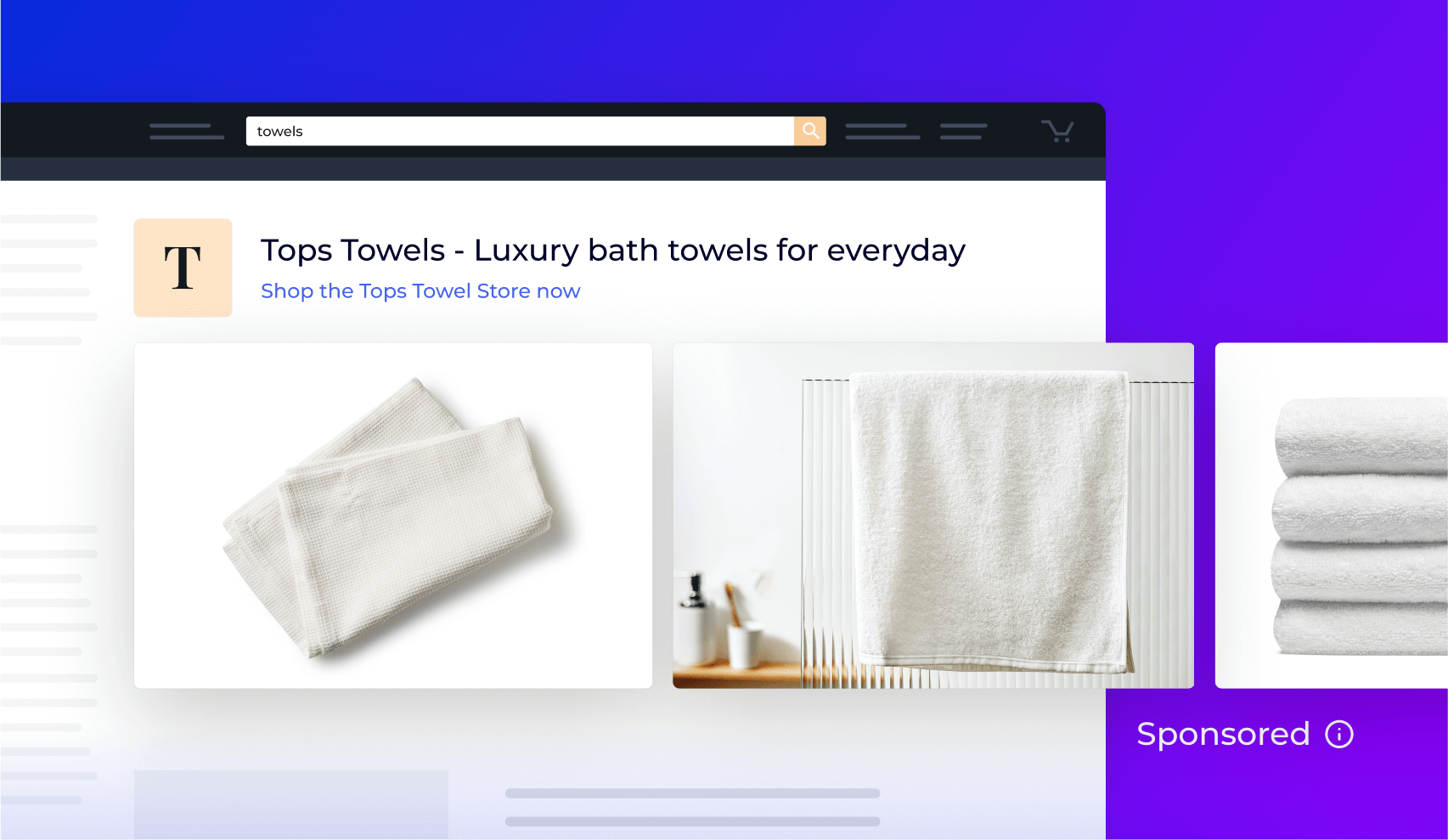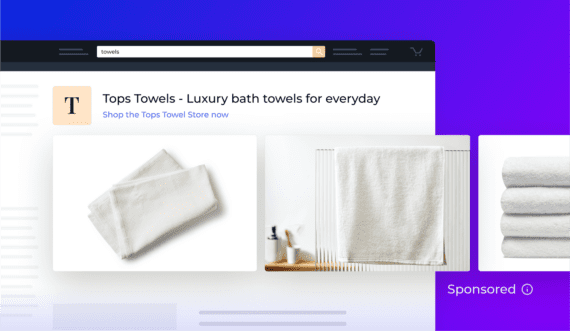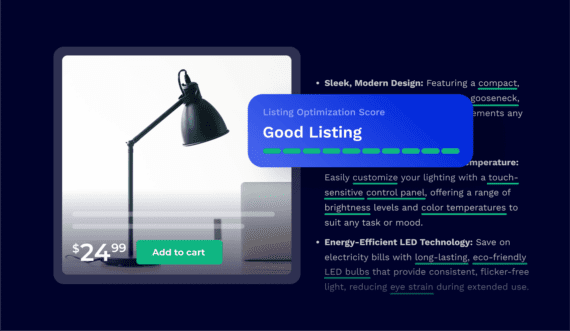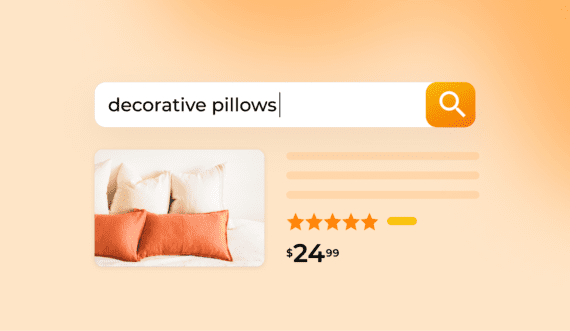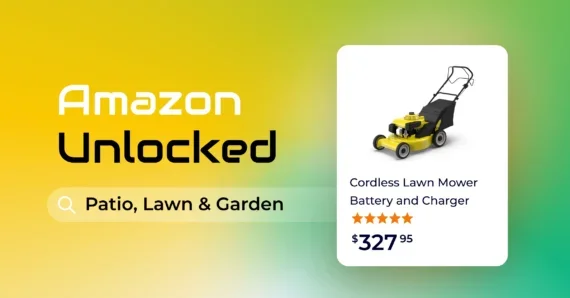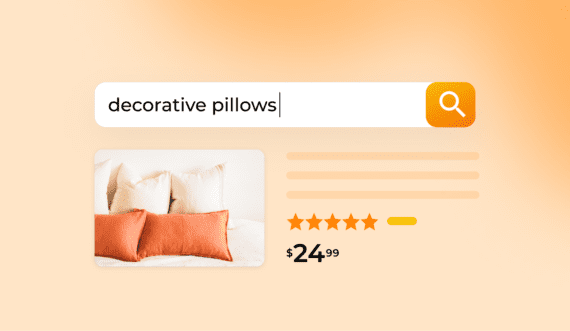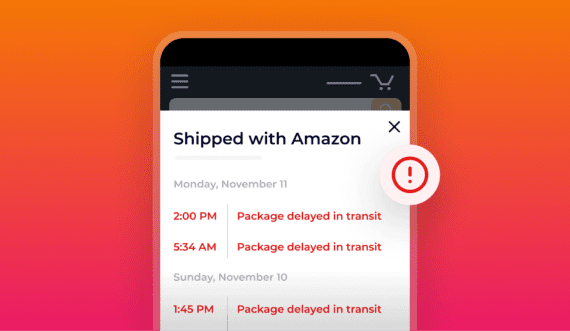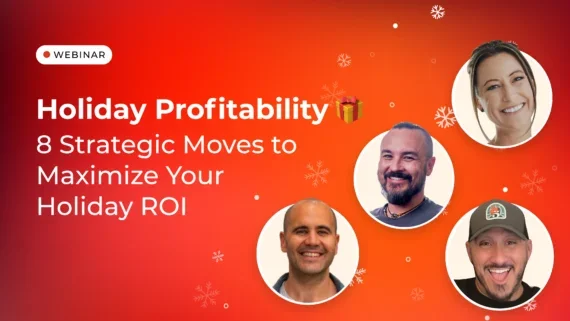Content
expand_moreWhether you’re launching your first private label product, reselling wholesale products, or owning a large brand, you must have an Amazon advertising strategy in place.
As a seller, big or small, it’s important to fully understand Amazon’s various advertising tools—especially as the competition grows. Amazon Advertising, formerly known as Amazon Marketing Services (AMS), is the umbrella term for all of Amazon’s advertising solutions.
What is Amazon PPC?
Amazon PPC (pay-per-click) is exactly what it sounds like—you pay Amazon each time a customer clicks on your ad, whether they purchase your product or not.
Amazon provides third-party sellers with an easy-to-use advertising platform for setting up various PPC ad campaigns within minutes. The amount you pay depends on the ad type, the keywords you target, and the competitiveness of your niche.
PPC ads are for professional sellers and Brand Registered sellers on Amazon who want to reach more customers. This is the most common ad platform for Amazon sellers and includes Sponsored Products, Sponsored Brands, and Sponsored Display ads.
Sellers enrolled in the Brand Registry also have access to Amazon Stores, Amazon Attribution, and Amazon Live—all of which fall under the Amazon Advertising umbrella.
Amazon provides sellers with important key metrics to help measure the success of each campaign you’re running:
- Clicks: This metric shows the number of times your ads were clicked. Amazon adjusts your report for invalid clicks (clicks that were accidental or otherwise illegitimate), typically within 3 days.
- Impressions: how many times your ad was displayed to a customer on Amazon.
- Spend: How much you have spent per campaign. This equals the total amount of click charges per product ad.
- Sales: The total amount of product sales generated within one week of clicks on your ads.
- Advertising Cost of Sales (ACoS): This measures the efficiency of your ads and represents the percentage of your ad-generated sales that you spent through advertising. To calculate your ACoS, divide the total amount of money you spend on ads by the revenue generated by your ads.
- Return On Ad Spend (ROAS): Another efficiency metric and the inverse of ACoS. To calculate it, divide the sales dollars attributed to your ads by your ad spend. For example, a ROAS of 5 means for every $1 spent on ads, you receive $5 in revenue.
These metrics can help you set goals for your advertising campaigns.
Understanding them all requires a bit of a learning curve, but after a bit of practice, you’ll be able to optimize your campaigns like a pro.
Why PPC ads are important for your Amazon business
It’s no secret that competition on Amazon continues to grow year after year, in turn driving the necessity for sellers to use Amazon Advertising.
PPC ads are immensely popular among Amazon sellers and brands of all sizes. 79% of first-party (1P) vendors and 71% of third-party (3P) sellers use at least one form of Amazon PPC.
Using Amazon advertising is particularly important when listing new products. With a simple keyword- or product-targeting campaign, PPC ads provide the audience reach you wouldn’t otherwise have, pushing your products to the front page of search results.
As long as you have a great product, great pictures, and a compelling, optimized listing, you shouldn’t have a problem converting ad clicks into sales. Those ad sales will then help increase your organic rankings for each well-performing keyword, further driving your sales.
Not surprisingly, 32% of sellers believe that using Amazon’s PPC platform is a top factor in their success as Amazon sellers.
Let’s go over the different types of ads you can run for your products, no matter if you’re a complete beginner or a seasoned seller.
Types of Amazon PPC ads
There are three types of Amazon PPC ads: Sponsored Products, Sponsored Brands, and Sponsored Display.
1. Sponsored Products
Every seller starts their Amazon advertising journey with a Sponsored Products campaign. You don’t need to be brand-registered to use it, and it’s the most straightforward form of PPC to set up. After conducting proper keyword research, you can launch a Sponsored Products campaign in minutes.
Sponsored Products ads appear at the top of the Amazon search result page and throughout the organic results, as well as on competing product listing pages.

Sponsored Products ad targeting
Within Sponsored Products, there are two types of targeting to choose from:
- Automatic-targeting ads: with this option, Amazon will decide which keywords to target based on the type of product you’re selling. It’s a great way to start running ads if you’re unsure of which keywords to target. You’ll have the opportunity to see which keywords Amazon comes up with and if they’re converting into sales. The downside is the lack of optimization options that manual targeting offers.
- Manual-targeting ads: sellers decide which keywords or products to target, set custom bids for each, and set their keyword search specificity to broad match, phrase match, or exact match.
- Broad match: targeted keywords can appear in any order in a search query, and additional words may be included (ie. if your target keyword is “marshmallow sticks,” your ad will also appear for “marshmallow and hot dogs sticks” and “roasting stick for marshmallow”).
- Phrase match: targets your keyword phrase in the order in which it’s entered, but may include other words before or after (e.g., “campfire marshmallow sticks” and “marshmallow sticks for roasting” are okay).
- Exact match: to see your ad, customers need to enter your keywords exactly as you wrote them. So only “marshmallow sticks” will be targeted, with no words before, after, or in between.
Our recommendation
In our How to Sell on Amazon for Beginners Guide, we recommend running both an automatic and manual campaign — once your listing is optimized, of course.
With manual targeting campaigns, you can choose from two subtypes:
- Keyword targeting: exactly how it sounds. You choose the keywords you want to target for your campaign. For example, you are selling fishing lures, so you target keywords such as “fishing lure”, “lure for fishing”, “fishing accessories”, etc.
- Product targeting: with this ad type, you can target your competitors’ listings instead of keywords. Using fishing lures as an example again, you can target your competitors’ ASINs, so your ads appear on their listing under the “Products related to this item” section, as shown above.
Note: You can run both keyword targeting and product targeting campaigns at the same time. You’ll just need to set them up separately.
2. Sponsored Brands
Sponsored Brands ads, previously known as Amazon Headline Search Ads, are banner ads that feature your logo, custom tagline, thumbnails for a few products, and even a video if you want. They appear above Sponsored Product ads in Amazon search results.
These types of ads help drive brand awareness by funneling all traffic to your custom Amazon storefront or a dedicated brand-centric landing page on Amazon. The biggest advantage here is that there are no competitor listings in sight—just your products.
Sponsored Brands ad types
With Sponsored Brands Ads, you can choose from three formats: Product collection, Store spotlight, or Video.

1. Product Collection
The Product Collection ad type allows you to advertise up to three products at once, with the option to send traffic to your Amazon Store or a dedicated landing page.
This is a great way to boost newer or lower-ranking products by advertising them alongside your high-performing products.
Here is another example of a Product Collection ad in action:

After clicking on the ad, it’ll bring you to this landing page:
2. Store Spotlight
The Store Spotlight ad format is only available if you have your own Amazon Store, as that’s where your traffic will go. As mentioned above, an Amazon Store is basically your custom ecommerce website, but on Amazon.
This is great for brands that sell multiple products across a variety of categories. Instead of just promoting three different products, you’ll be able to promote three different categories of products, as well as their specific store subpages.
Here’s a great example of a Store Spotlight ad:

As you can see, instead of advertising just three products, the Frigidaire brand is showcasing three different subcategories within the ad—water filters, probiotic cleaners, and air filters.
If we click on “Air filters that fit every refrigerator,” we’ll arrive at the air filter subpage within their Amazon Store.

3. Video
The Sponsored Brands Video ad format can offer brand registered sellers a huge advantage over their competitors, as video ads tend to stand out within search results.
After searching for the keyword “boat sponge,” this video popped up and stopped me in my tracks.

Video ads play automatically, making them eye-catching and immediately helpful to the scrolling customer.
Amazon recommends that your videos be short and informative—between 15–30 seconds. A well-done video ad tells the potential customer everything they need to know about the product within the first few seconds through effective visuals and subtitles.
Before creating your product video ad, make sure you review Amazon’s guidelines on video creation—otherwise, you risk having your video rejected.
Unless you’re a skilled videographer, we recommend you hire a professional to shoot and edit your video ad.
Best Practices for Product Video Ads
- Create a demonstrative video about your product that answers all your customers’ questions
- Do not include any unnecessary scenes or filler content. The video ad should be completely product-focused
- Keep your videos short and to the point (15–30 seconds)
- Your videos will autoplay without sound, so add informative captions. That way, customers don’t need to unmute to learn about your product
- The video will automatically loop, so consider making the loop seamless
- Show your product immediately as the video starts. Do not use fade-in effects or begin with an intricate introduction
Sponsored Brands ad Targeting
Similar to Sponsored Products, you can choose from two targeting options for your Sponsored Brand ads:
- Keyword targeting: you choose the keywords you want your Sponsored Brand ads to show up for
- Product targeting: select the specific products, categories, brands, or other product features to target with your ads
3. Sponsored Display
What makes Sponsored Display ads special is the ability to reach relevant audiences on and off Amazon. That’s right: you can advertise to—and retarget—customers on third-party websites and apps.
Like Sponsored Brands, Sponsored Display is also only available to brand-registered sellers or Vendors.
The biggest difference between Sponsored Display, Sponsored Products, and Sponsored Brands is how you target customers. Instead of targeting keywords or competitors’ products, you’ll target potential customers based on interests, shopping behaviors, and whether they’ve viewed your product’s detail page in the past.
Amazon defines Sponsored Display as “a self-service display advertising solution that helps you grow your business and brand on Amazon by engaging shoppers across the purchase journey, on and off Amazon.”
Essentially, this means Amazon keeps track of the products a given customer views on their site and displays them again across Amazon search results, competitor listings, and the third-party websites or apps that customer uses.
That way, you can remind customers about your product and brand, even if they’ve navigated away from your Amazon listing.
Here is an example of Display Ads in action:

In this example, you can see that Sponsored Display offers an added benefit: you can target listings for complementary products. The Boat Wash product (the ad at the far right in the image above) is not directly related to the main product (sponges) but will complement the purchase.
Sponsored Display ad targeting
With Sponsored Display ads, there are a few ways to target an audience.
How you can set up an effective Amazon Advertising campaign
Launching a successful Amazon Advertising campaign requires strategic planning, data-driven decision-making, and ongoing refinement. Whether you’re just starting or looking to ramp up ROI, following these steps can help ensure your campaign is optimized for visibility, engagement, and sales.
1. Select the right keywords
The foundation of any effective Amazon Advertising campaign is keyword selection.
Using tools like Jungle Scout’s Keyword Scout and Rank Tracker can help identify high-performing, relevant keywords.

These tools provide insights into search volume, competition, and relevance, making it easier to pinpoint terms that match customer search intent.
For experienced sellers aiming to increase ROI, focus on long-tail keywords that reflect specific purchase intent. These often have lower competition and higher conversion rates. Additionally, monitor keyword trends regularly to adapt your campaign to seasonal or market shifts.
2. Choose a bidding strategy
The right bidding strategy depends on your ad goals and budget. Decide between fixed bids or dynamic bidding strategies, considering the type of PPC ad (Sponsored Products, Sponsored Brands, or Sponsored Display).
Adjust bids over time based on performance data to strike a balance between visibility and cost-effectiveness.
Experienced sellers can benefit from employing dynamic bidding with bid adjustments for placements (e.g., top of search vs. rest of search).
3. Allocate your budget wisely
Set a budget that aligns with your sales goals and overall business strategy. Jungle Scout’s data insights within Advertising Analytics can guide ad spend allocation, ensuring you invest in campaigns that deliver strong returns while avoiding overspending or underfunding.
Leverage historical data to set daily and monthly limits while preserving flexibility to increase budgets for top-performing campaigns during peak seasons or promotions.
4. Monitor key metrics for ROI
To ensure your campaign remains effective, track essential metrics such as ACOS (Advertising Cost of Sales), CTR (Click-Through Rate), and conversion rate. Regularly reviewing these figures will help you identify areas for improvement and adjust your strategy accordingly.
For sellers aiming to scale, consider deeper metrics like TACoS (Total Advertising Cost of Sales) to measure how ads contribute to overall business growth. Pair this with customer acquisition cost analysis to gauge whether campaigns are driving profitable new customers.
5. Refine and optimize with data
Jungle Scout’s suite of tools, including AI Assist, provides actionable insights to refine your campaign. Use these insights to adjust keyword targeting, improve product detail pages, and enhance ad creative.
Advanced sellers can leverage tools like Competitive Intelligence to gain insights into competitors’ ads, which helps them anticipate shifts in ad performance and adjust proactively.
6. Continuously test and experiment
Effective advertising requires ongoing experimentation. Test variations in keywords, images, and ad copy to see which combinations yield the best results. Use A/B testing to identify winning strategies and double down on high-performing elements.
Experienced sellers can go a step further by testing advanced ad placements, such as video ads, to differentiate their campaigns from competitors.
Increase your sales and brand awareness with Amazon Advertising
Amazon wants sellers like you and me to succeed—that’s why they continue to innovate and create advertising solutions to grow sales, increase impressions, and drive more brand awareness.
While it’s not completely necessary to use Amazon Advertising to succeed on Amazon, it certainly helps—remember that even if you’re not advertising on Amazon, you can bet your competitors are.
Amazon continues to provide more and more reasons why brands should enroll in the Brand Registry Program. With the ability to create video ads and retarget customers off of Amazon, it really is a no-brainer to get started with at least one campaign.
If you’re not brand-registered yet, don’t worry. Sponsored Products ads are still an incredibly effective way to reach new customers, increase your sales, and beat your competition.
We hope this in-depth Amazon Advertising guide helps you understand a little more about how you can grow your business on Amazon.
Learn how you can use Jungle Scout to start, grow, and run your Amazon business.
Brian Connolly is an Amazon seller, ecommerce expert, and writer for Jungle Scout. He lives in the New Jersey Shore area with his wife and cat. When he isn’t writing advice online for aspiring and experienced Amazon sellers for Jungle Scout, he spends his free time boating, fishing, and selling boating-themed items on his Amazon business.

